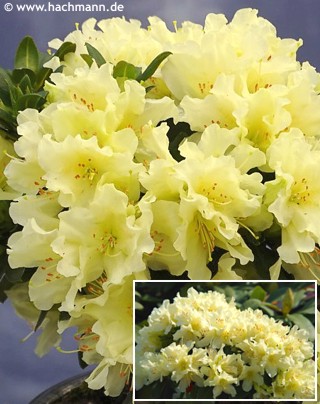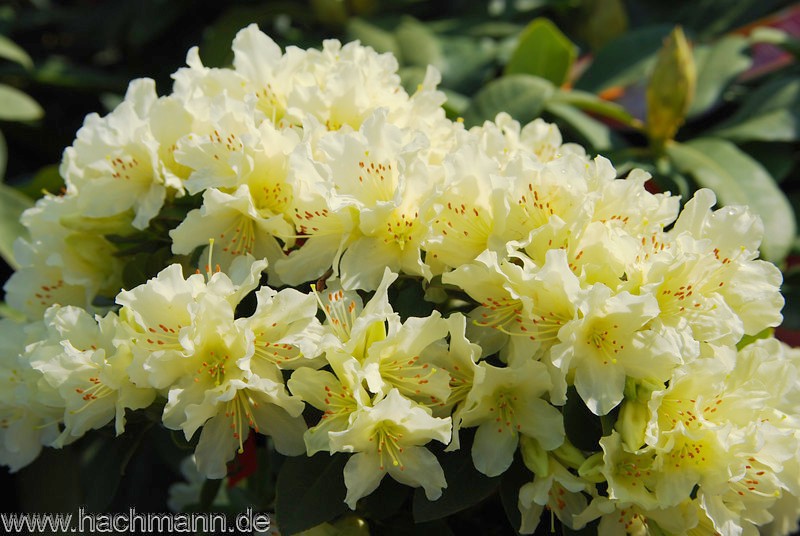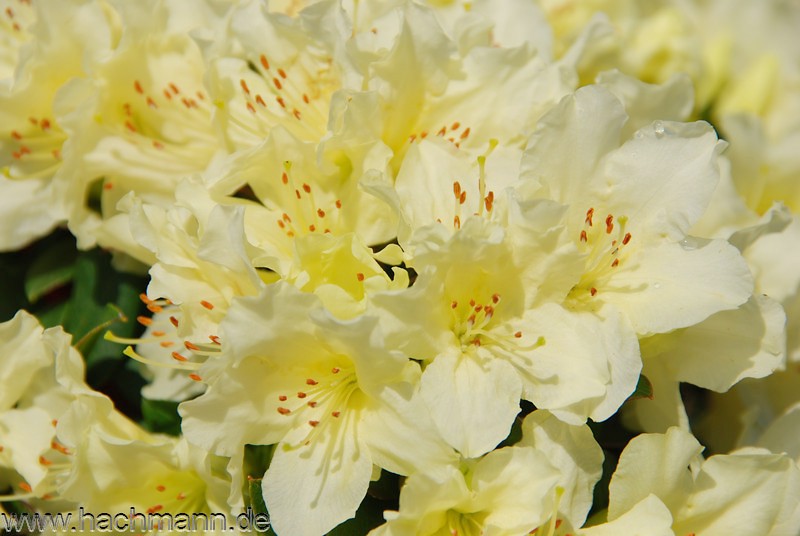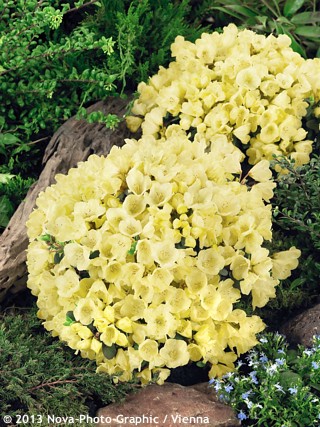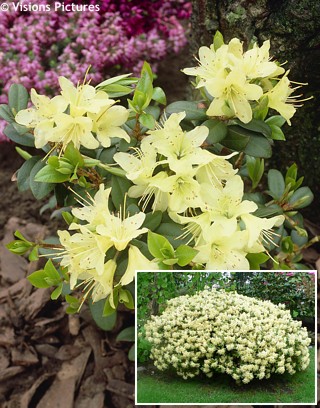Rhododendron 'PATTY BEE' dwarf rhododendron
size/type
low or groundcovering,low or groundcovering
usual height
0,3-0,5m
usual width
0,5-1m
leaves
evergreen broadleaf
colour of leaves
flowers
showy
colour of flowers
blooming time
May
location
full to partial sun
USDA zone (lowest)
7 (down to -23°C)
winter protection
for zone 5+6

for zone 7

categorized
Rhododendron
Rhododendrons are reliable, beautifully flowering, evergreen shrubs of variable origin: S.W. China, Himalayas, Northern America, and even Europe. The original species were hybridized several times for better performance so in the 1950´s there were more than 10,000 cultivars registered, and the number keeps increasing.Description of the plant:
Dwarf rhododendron Patty Bee swam up to European coasts from Port Ludlow in the USA where Warren Berg (1923-2006) bred many dwarf and compact rhodo varieties. Now, pay attention to an interesting name coincidence: Warren was from Port Ludlow. This town has nothing to do with Frank Ludlow (1885-1972), an English botanist, who in 1936 discovered a new rhododendron species on his expedition to Tibet, that was later named r.ludlowii in honour of his achievement. And in order to make things even more confused, Warren Berg from American Port Ludlow in many cases worked with the same species of r.ludlowii that the English gentleman Frank Ludlow discovered. Almost freaky, isn't it? I will always wonder if these two guys ever met ...Patty Bee rhododendron grows slowly into a dwarf, mounding shrub smothered with light yellow flowers in May. It was bred by Warren Berg in 1970 as a cross between cv.Yaku Fairy a r.fletcherianum, and its name reflects another passion of his: beekeeping. Evergreen leaves are small, only 3 cm long, leathery, elliptic, dark olive green and cover the plant completely. Adult plants reach some 40-50 cm tall and twice as wide.
Dwarf rhododendrons seldom require deadheading. The roots are shallow, spreading to sides in search for nutrients. Never plant them too deep. The soil has to be acidic (pH 4.5-5.5), rich in humus, cool and always moist. Ideal soil mixture is peat with lime-free, light garden soil topped with leave-mould. It is hardy to min. -24°C (USDA zone 6) and is expected to take a couple of degrees lower.
Last update 06-12-2018
QUICK PRICE OVERVIEW
CURRENTLY SOLD OUT
WANT TO TRY A SIMILAR PLANT?












